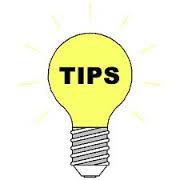In math today, it seems like you finally understand what a new math tool is called and then you hear a new name and wonder if it is the same thing or something completely different. Most of you have heard of an Abacus; then the other day I saw it called a Ten Bar Demonstration Rekenrek. Guess what? It is the same thing!
So let's get the lingo straight!
- An abacus is cleared with all of the beads to the right (I like to put a sticker or a sharper marker smiley face on the right corner of the abacus to help children know when it is cleared). You move the beads to the left and read it from left to right.
- Great for supporting the development of number sense, rekenreks are visual models that encourage students to subitize, think of numbers in groups, strengthen counting proficiency, develop addition and subtraction strategies, and gain a better understanding of number relationships.
- Use the Ten-Bar Demonstration Rekenrek to teach numbers up to 100. This unit features 10 bars, each containing 10 beads (100 beads total). The bead color changes after the first five beads. The inner and outer faces of the frame are painted blue for easier visibility.
What is a Rekenrek?
Measures 6 5/16" × 3 3/8" × 2 3/8"
Buy it HERE
A Rekenrek usually has a total of 20 beads in two rows, with 5 in red and 5 in white on each row. It is ideal for PK-1. This is also known as a Two-Bar Rekenrek, Twenty Math Rack, and Twenty Number Rack.
- Like the abacus, this is cleared to the right (I like to do red in the lead). I put a sticker on the right side of the Rekenrek to help students know how to clear it. You also move the beads to the left and read it from left to right. One thing I love to do with the Rekenrek is to push the red beads to the left and the white beads to the right and have students show me how many ways they can come up with a sum (by pushing the beads to the center). Example: How many ways can you make the sum of 7 (4 red and 3 white, 5 red and 2 white, etc.)
- Great for supporting the development of number sense. Rekenreks are visual models that encourage students to subitize, think of numbers in groups, strengthen counting proficiency, develop addition and subtraction strategies, and gain a better understanding of number relationships.
- Use the Rekenrek to practice numbers up to 20. This unit features a plastic frame, 2 metal bars with 5 red beads, and 5 white beads, on each.







No comments:
Post a Comment